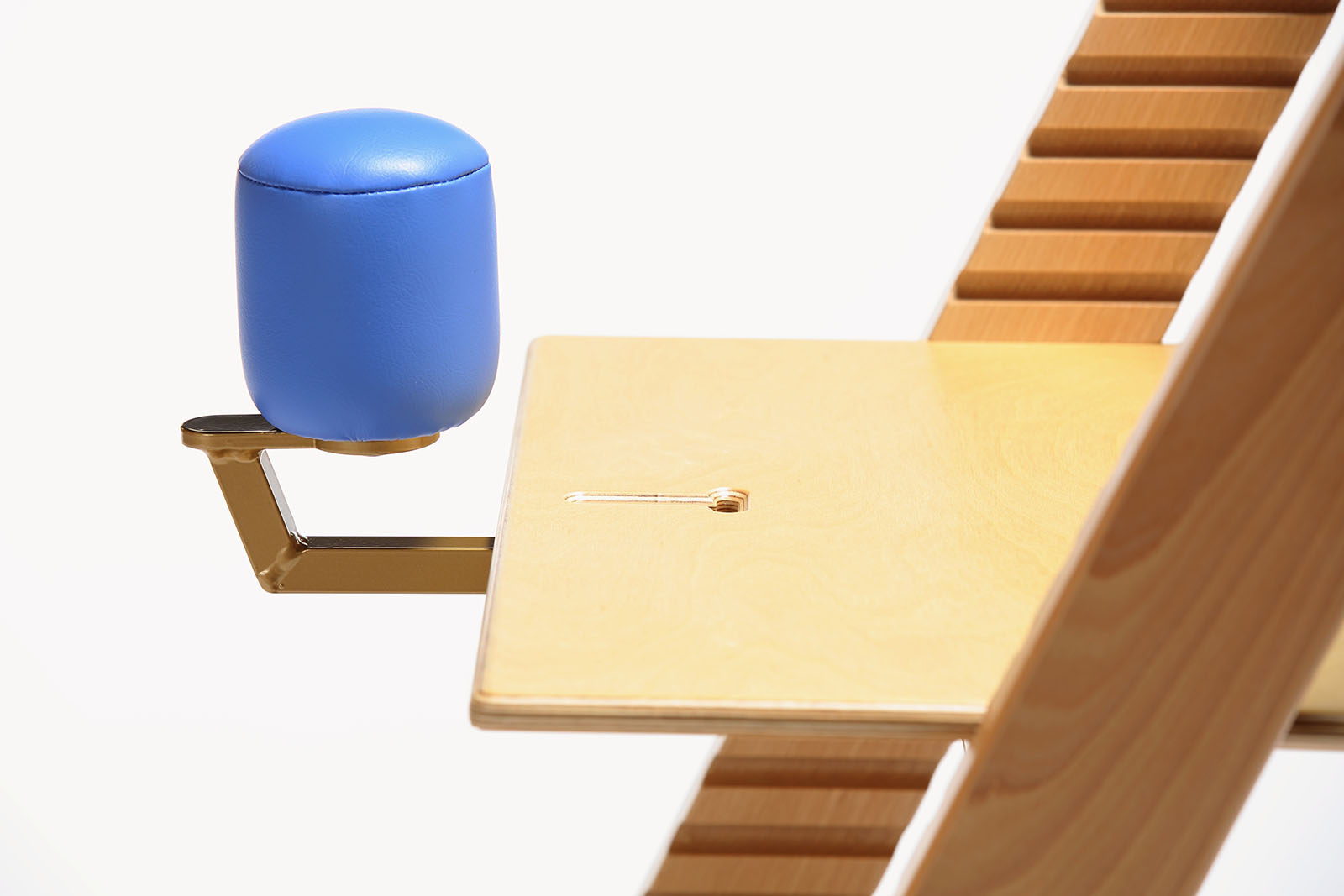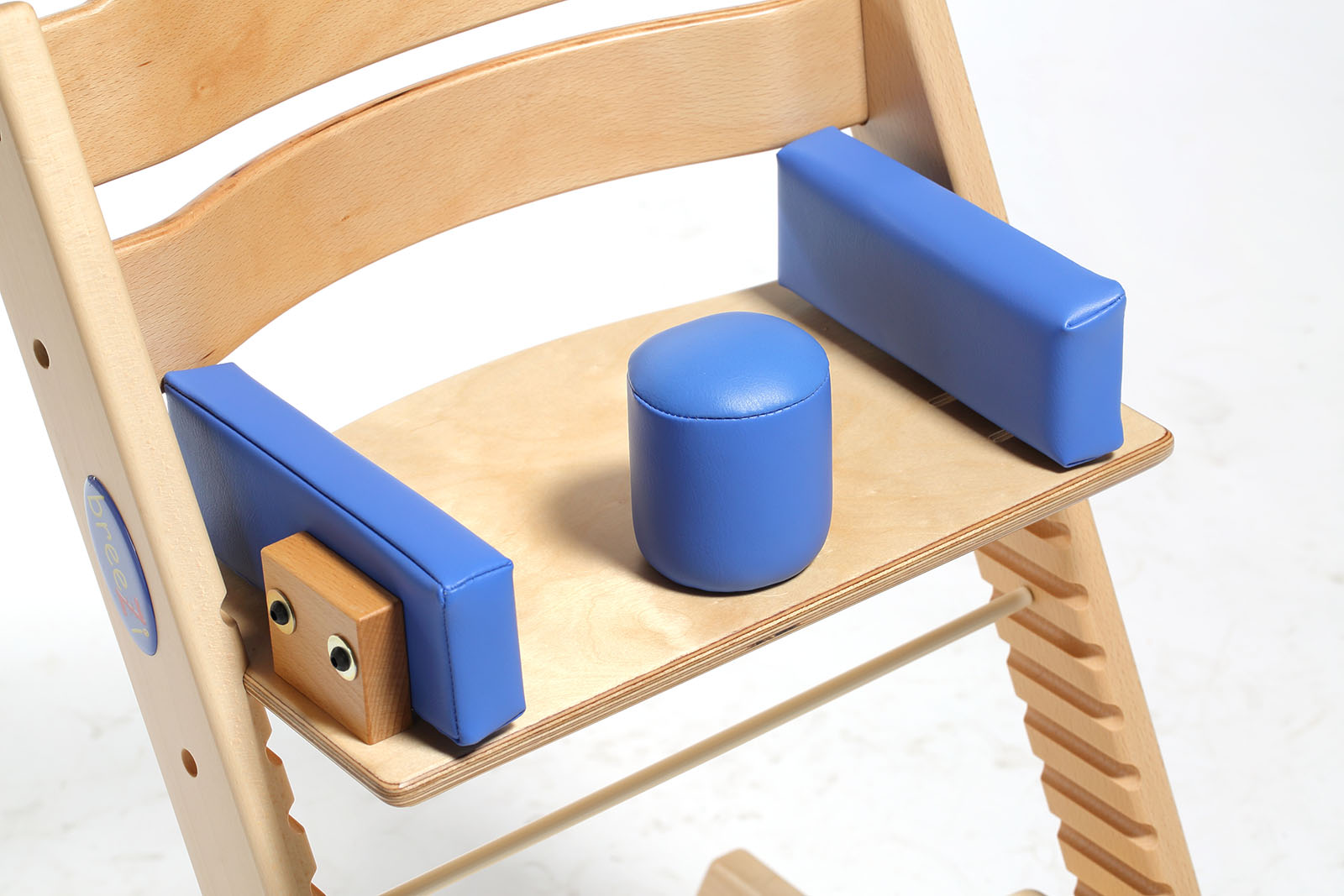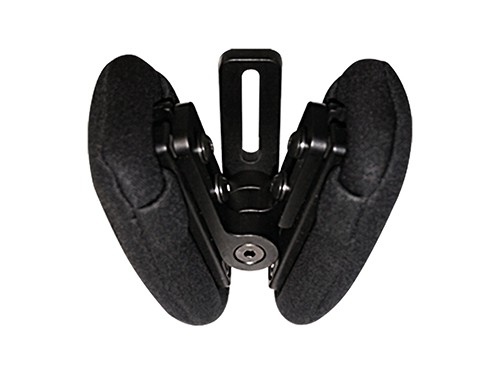Categories
Speciality Areas
Pommels, what they are and what they aren’t

Pommels come in all shapes and sizes: round ones, triangular ones, oval ones. Sometimes they are fixed, sometimes they are flip down, and sometimes they are quick release. Regardless of their form and how they are mounted, this article looks at what they should and should not be used for.
A pommel was originally the name given to the rounded knob at the top of a sword, dagger, or old-fashioned gun. Later it became the name for a protuberance on the front of a horse’s saddle, and was there as something to grab hold of if needed and to increase the range of safe movement to enable fighting. In seating, this has been the common name attributed to an item at the front of the seat, between the legs. But why do we issue these? As we discuss in this article, there is one thing that a pommel is not, and that is a legitimate means to stop someone slipping forward in their seat.
Labelling convention for seating supports
To find out what a pommel should really be used for, let’s give it its proper name – left or right medial knee support. This stems from ISO 16840-11 and the related Clinical Guidelines document2 (which cover seating terminology), wherein it says that supports are named by the body segment intended to be contacted (here the knee), and the side of the segment (using the terms inferior/superior, anterior/posterior, or medial/lateral to indicate which side of the body segment the support is placed – here right or left, and medial). ‘Pommel’ itself is a deprecated term within the wheelchair terminology standard ISO 7176-263.

Note that the term abductor is not used, since, according to the Clinical Guidelines, supports should NOT be labeled by their intended purpose. In the case of the medial knee support it could just be limiting adduction, rather than actively creating abduction. The purpose of the support is client specific, and is dependent on how it is applied. The problem with labelling a support based on its intended purpose is that it limits possible uses, it can be misleading, and it risks replacing good client specific problem solving.
Good practice
Why is it not good practice to use a pommel as means to stop someone slipping forward? The main reason is that the groin is not designed to be load-bearing: if the individual is sliding forward into the ‘pommel’ they are probably slipping into posterior pelvic tilt and a kyphotic spinal curvature, which is not an ideal seated posture.
So what is the best practice then for controlling the position of the pelvis for a client with a tendency towards posterior tilt at the pelvis?
The answer is: follow the guidelines to be found in BS 86254, and place a pelvic positioning belt over the thighs and attach it to the seat frame anterior to the greater trochanters. This combined with a block at the PSISs at the top of the rear of the pelvis, should help to keep the pelvis in a relatively neutral position, but still allow the client to reach forward.
Why is it important/useful to keep the knees apart?
The natural position of the thigh bone, the femur, is coming away from the hip joint at an angle of 5° of abduction. At this angle the ball-shaped head of the femur fits best into the circular socket in the pelvis, the acetabulum. For some people this is a natural sitting position, while for others they need a medial knee support to stop the thigh rotating into the midline. There may also be a need for a lateral knee or lateral thigh support, to control the amount of outward rotation of the thigh. Most medial knee supports are single objects that act as both right and left medial knee supports at the same time. Stealth Products offer a neat solution (Figure 1) where the left and right medial support pads can be adjusted individually to meet differing requirements of the left and right leg, but placed under a single cover to make the two parts appear visually as a single item.

The Stealth Products MTD-42 (Figure 1.) provides for separated left and right medial knee support that can be adjusted for the needs of each leg.
Is a medial knee support the only way to do this?
A useful device that can cover both the needs of keeping the pelvis from slipping into a posterior tilt, while controlling the amount of hip abduction at the same time, are leg harnesses (Figure 2). These curve around the thighs, and depending on the fixation points selected, can provide greater or lesser aggressive leg and pelvic positional management.

Figure 2. Leg harnesses provide individual leg and pelvic positioning management – away from the groin.
Do no harm
Following the premise of the Hippocratic Oath sworn by doctors, the same principle needs to be applied right across the realm of allied health. This principle of ‘Do no harm’ should be applied to all equipment that is prescribed, as well as its accessories. This principle in detail is very relevant to the positioning and purpose of medial knee supports. We have a responsibility not just to do no harm by what we provide, but also promote a potentially less harmful posture.
References
- ISO 16840-1:2006 Wheelchair seating — Part 1: Vocabulary, reference axis convention and measures for body segments, posture and postural support surfaces
- Waugh, K & Crane, B (2013) A Clinical Application Guide to Standardized Wheelchair Seating Measures of the Body and Seating Support Surfaces
- ISO 7176-26:2007 Wheelchairs — Part 26: Vocabulary
- BS 8625:2019 Selection, placement and fixation of flexible postural support devices in seating. Specification